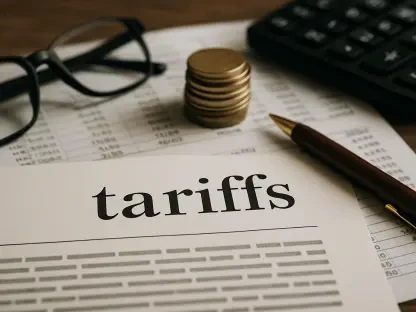In recent times, the Federal Reserve has taken significant steps in adjusting interest rates to manage economic conditions, a move that is closely monitored by economists, investors, and the general public alike. One such prominent voice has been that of Federal Reserve Governor Christopher Waller, who recently elaborated on the future trajectory of interest rate cuts. His insights provide a valuable lens into the evolving strategy of the Federal Reserve as it navigates a complex economic landscape.
Governor Waller has indicated a shift towards a more cautious and measured approach in adjusting interest rates. Unlike the aggressive half-point cut observed in September, future rate reductions are expected to be more incremental. This tempered stance stems from the mixed economic data currently shaping the financial landscape. Recent indicators show a complex economic picture. The labor market has performed stronger than anticipated, with employment figures staying robust. Furthermore, inflation rates have hovered slightly above the Federal Reserve’s targets. These factors contribute to an economy that appears more resilient than initially predicted, complicating the decision-making process for policymakers.
A Gradual Approach to Rate Cuts
Waller has articulated that these mixed signals necessitate careful consideration. The Federal Open Market Committee (FOMC), which oversees monetary policy, remains committed to a data-driven approach. Their goal is to avert hasty decisions that could destabilize the economy. The overarching sentiment is one of caution and prudence in ensuring sustainable economic health. His comments reflect a preference for gradual adjustments in policy rates over the next year without committing to a specific path or timeline.
Governor Waller’s speech at Stanford University served as a critical communication regarding the Federal Reserve’s perspective on future interest rate adjustments. He articulated a stance that, despite a significant half-point reduction in September, future cuts would be more restrained. This approach is influenced by recent data showing stronger-than-expected employment, inflation slightly above target, and robust GDP figures. Waller underscored that the totality of data suggests the economy has not decelerated to the extent policymakers hoped. Consequently, the Fed will adopt a more cautious pace in reducing rates.
Economic Resilience and Mixed Indicators
Anticipating the future, the Federal Reserve’s stance involves a strategy of incremental adjustments rather than sweeping changes. The FOMC’s plan for further rate cuts over the next couple of years is designed to be flexible, contingent upon ongoing economic evaluations. This more measured approach aims to align monetary policy with real economic conditions, avoiding the pitfalls of overcorrection. Governor Waller’s insights reveal a preference for gradual policy recalibration. This strategy reflects the Fed’s commitment to maintaining economic stability without precipitating unnecessary market fluctuations.
Any measure aimed at reducing rates would be comprehensive and pragmatic, ensuring that every decision is data-driven. Recent economic indicators underline a complex, yet broadly positive, outlook. The Gross Domestic Product (GDP) growth remains robust, suggesting an economy that continues to expand at a healthy rate. Meanwhile, the labor market has shown resilience, with unexpected job growth, complicating the Federal Reserve’s task of managing inflation pressures. Despite inflation trending slightly above target levels, the overall economic indicators underscore an enduring strength that the Federal Reserve cannot ignore.
Policy Adjustments and Future Outlook
Waller’s comments reflect a broader consensus within the FOMC that while the economy is strong, there are still vulnerabilities that need monitoring. The balance between ensuring economic growth and avoiding overheating is delicate. Policymakers must tread carefully, incorporating the latest data and projections into their strategic frameworks. This includes factoring in recent revisions in economic reports which indicate a stronger economy than earlier estimates had shown. For instance, gross domestic income and the national savings rate have been revised upwards, suggesting a more resilient economic foundation.
Governor Waller’s stance aligns with the Federal Open Market Committee’s cautious outlook, emphasizing gradual rate cuts to avoid destabilizing markets. This prudence aims to balance the drive for growth with the imperative of maintaining financial stability. Future rate adjustments will be highly dependent on continuous monitoring of key economic indicators, ensuring that policy changes are made with the most accurate and up-to-date information available. The Fed’s current strategy demonstrates a commitment to fostering an environment conducive to long-term prosperity, notwithstanding the complex and evolving nature of the economic landscape.
Concluding Remarks from Governor Waller
Lately, the Federal Reserve has made significant adjustments to interest rates to manage the economy. This move is closely watched by economists, investors, and the general public. One notable commentator on this topic is Federal Reserve Governor Christopher Waller, who recently offered insights on the future path of interest rate cuts. His perspective sheds light on the evolving strategy of the Federal Reserve as it deals with a complicated economic environment.
Governor Waller has suggested the Fed is shifting toward a more cautious approach in adjusting interest rates. Unlike the aggressive half-point cut seen in September, future rate reductions are expected to be more gradual. This restrained stance is born from mixed economic data influencing the financial outlook. Indicators show a complex economic scenario. The labor market has been stronger than expected, with employment figures remaining solid. Additionally, inflation has hovered slightly above the Fed’s targets. These elements point to an economy more robust than initially thought, making the decision-making process for policymakers more intricate.









